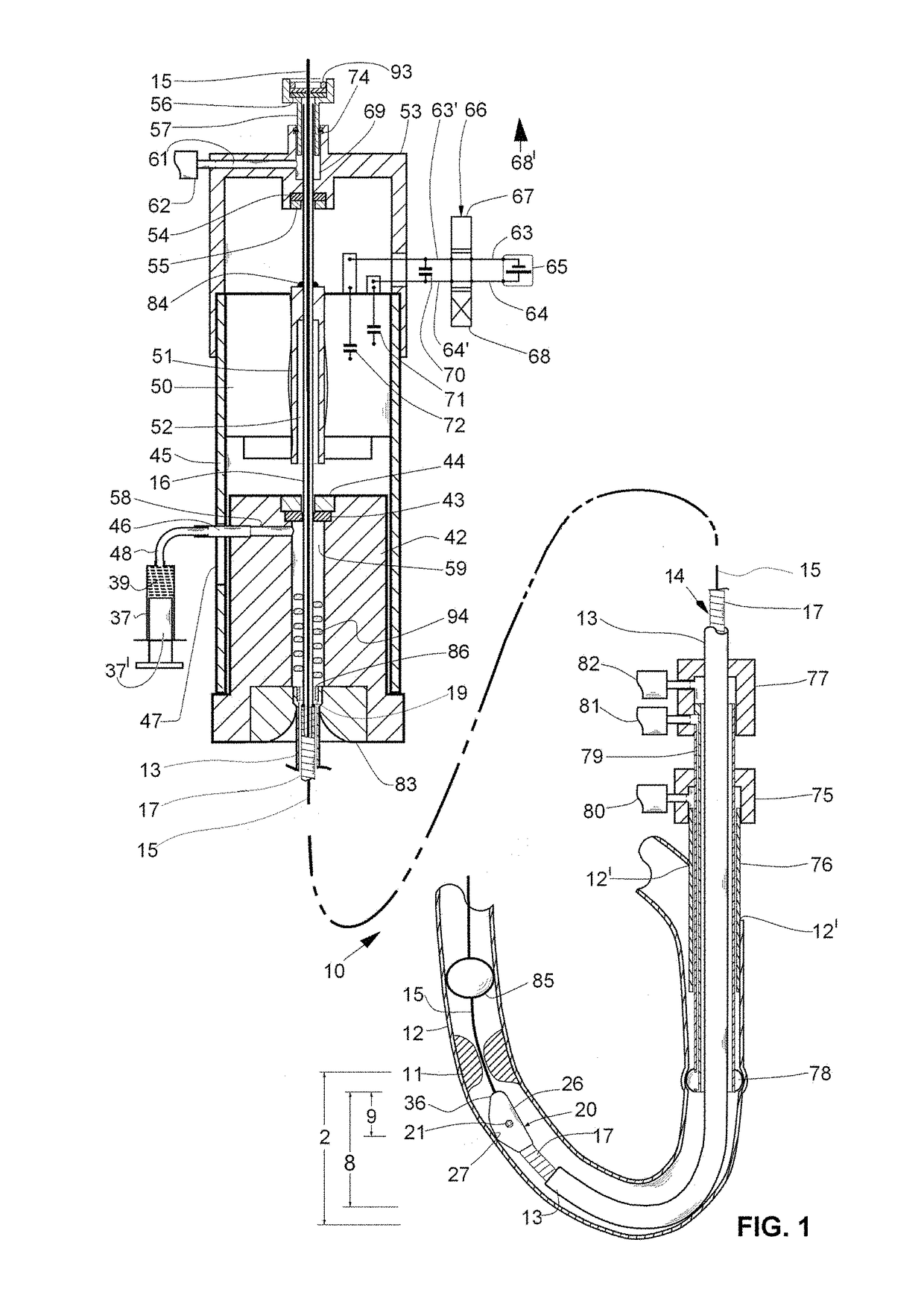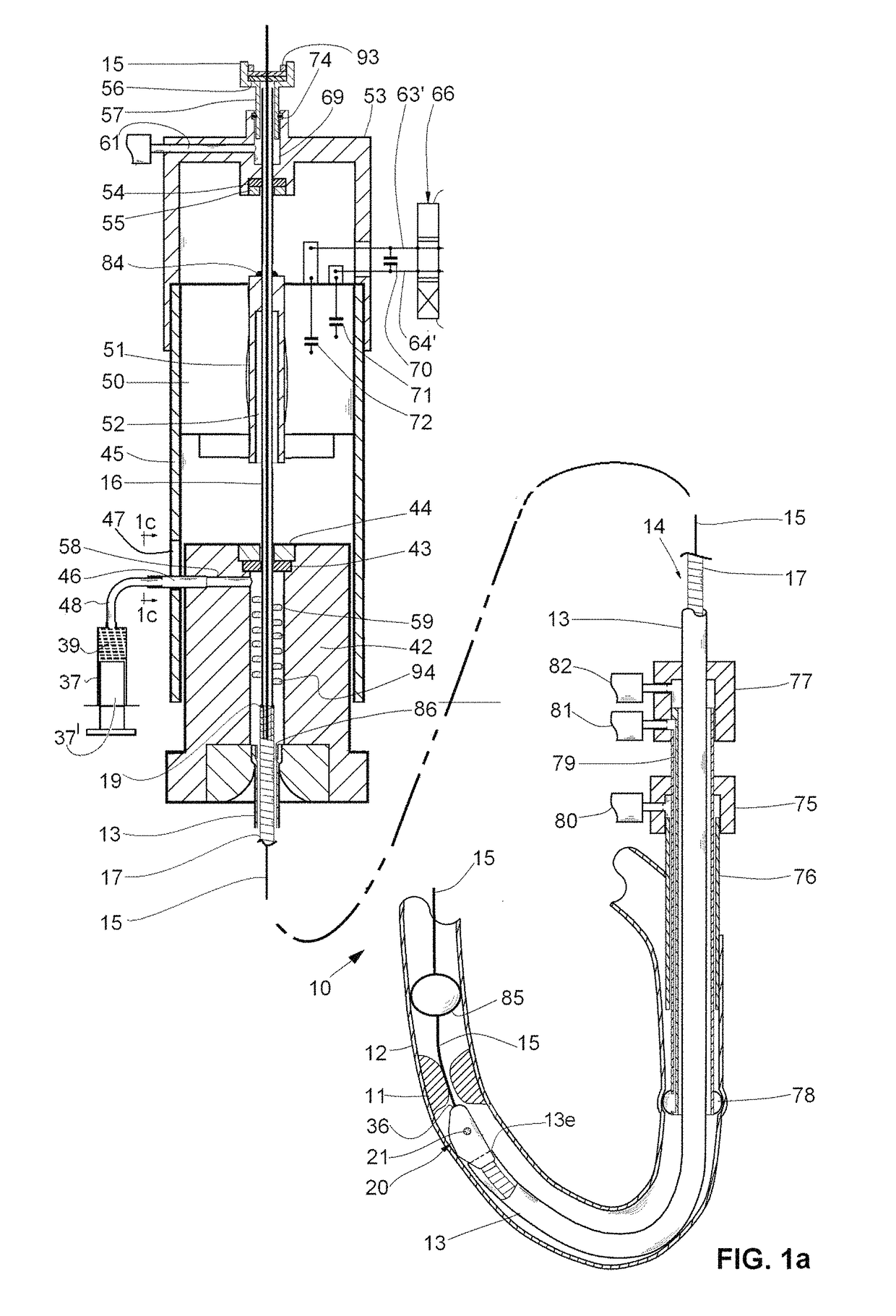Mechanical — pharmaceutical system for opening obstructed bodily vessels
a technology of bodily vessels and mechanical parts, applied in the field of mechanical — pharmaceutical systems for opening obstructed bodily vessels, can solve the problems of forcing patients to undergo a more formidable bypass surgery, and achieve the effect of reducing the likelihood of releasing particles and ensuring aspiration
- Summary
- Abstract
- Description
- Claims
- Application Information
AI Technical Summary
Benefits of technology
Problems solved by technology
Method used
Image
Examples
Embodiment Construction
[0043]FIG. 1 shows a motorized rotary catheter 10, according to the present invention, for opening an obstruction 11 (e.g., blood clot; atheroma) in a bodily vessel 12 (e.g., a blood vessel).
[0044]The rotary catheter 10 comprises a motor-driven flexible hollow shaft 14, rotatably disposed in a flexible tube 13 that is preferably made of thin plastic material. A proximal portion 16 of the flexible hollow shaft is preferably a thin-walled tube and a distal portion of the flexible hollow shaft 17 is preferably made of a spiraled wire. The wire that is used to wind the spiraled wire preferably has a flattened cross-section (such a cross section can be obtained by taking a standard round wire and running it between rollers that squeeze and flatten it, please note FIGS. 4-6.). The flexible hollow shaft portions 16 and 17 are preferably made of metal (e.g., stainless steel; Nitinol) and are connected together, for example, by a circumferential weld 19 (please note FIG. 1) or by two circumf...
PUM
 Login to View More
Login to View More Abstract
Description
Claims
Application Information
 Login to View More
Login to View More - R&D
- Intellectual Property
- Life Sciences
- Materials
- Tech Scout
- Unparalleled Data Quality
- Higher Quality Content
- 60% Fewer Hallucinations
Browse by: Latest US Patents, China's latest patents, Technical Efficacy Thesaurus, Application Domain, Technology Topic, Popular Technical Reports.
© 2025 PatSnap. All rights reserved.Legal|Privacy policy|Modern Slavery Act Transparency Statement|Sitemap|About US| Contact US: help@patsnap.com



